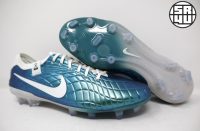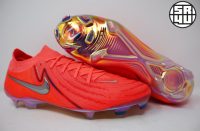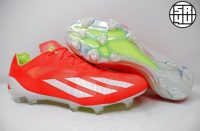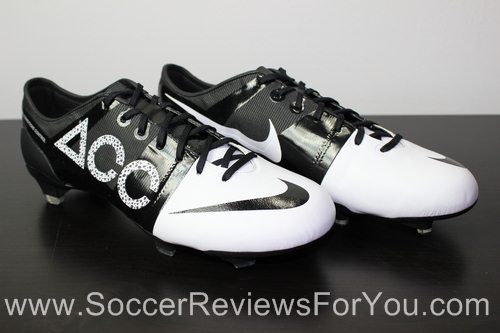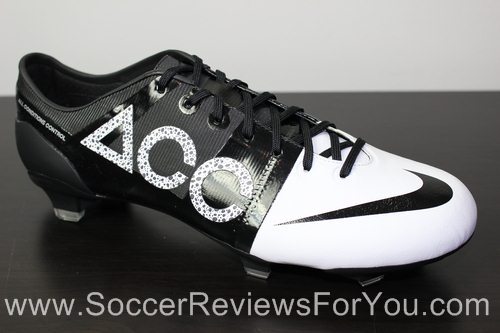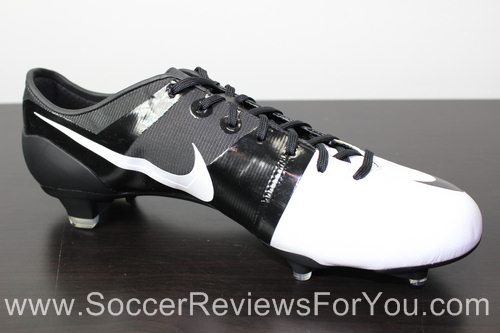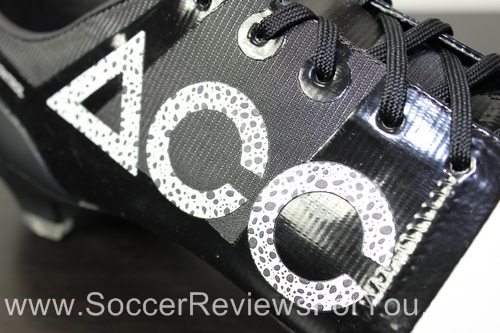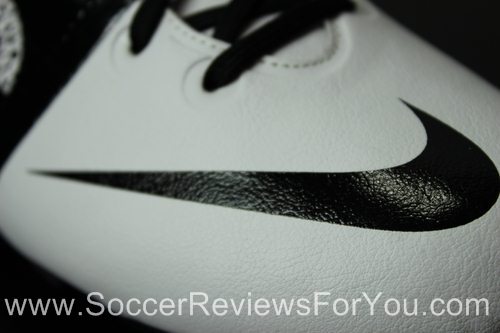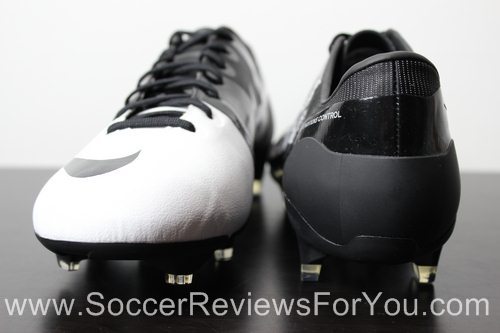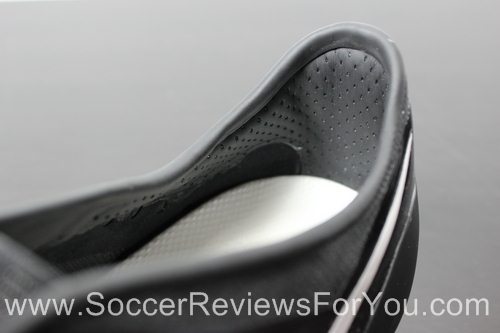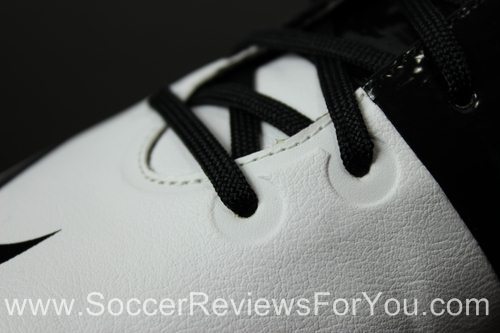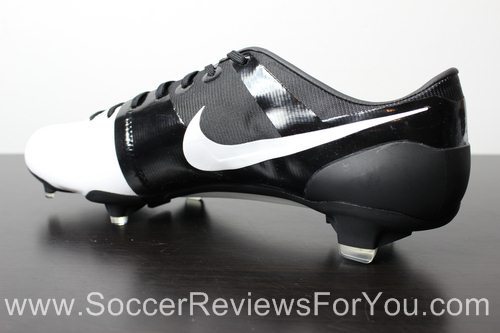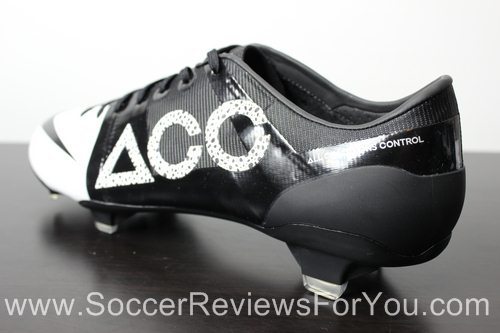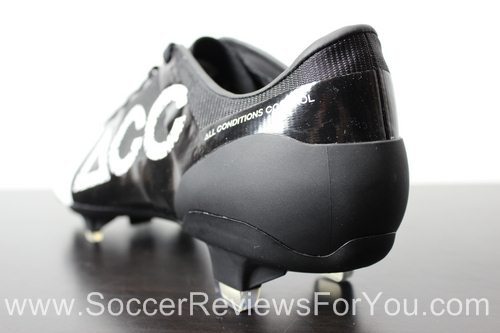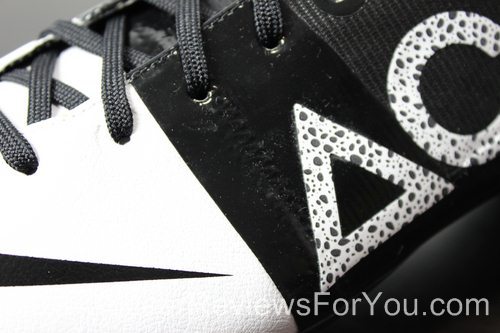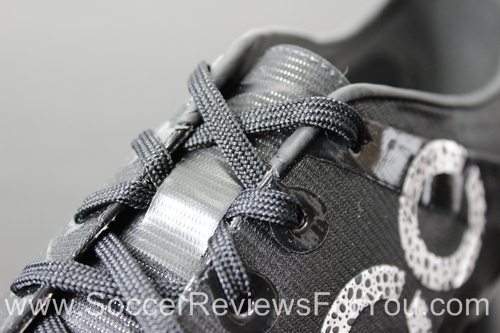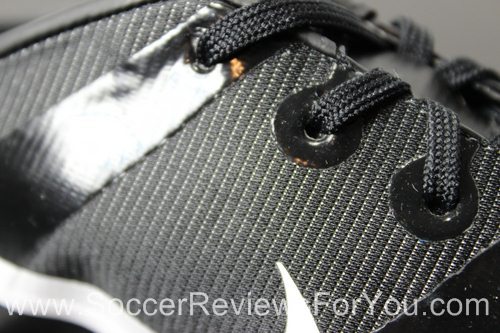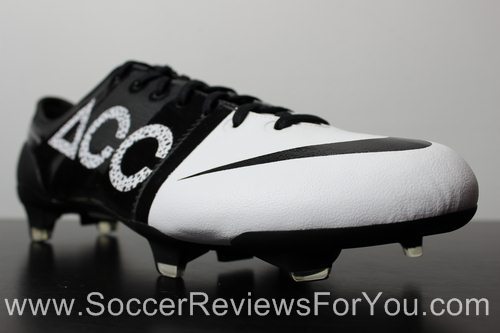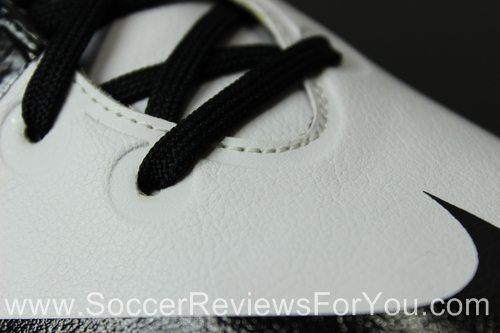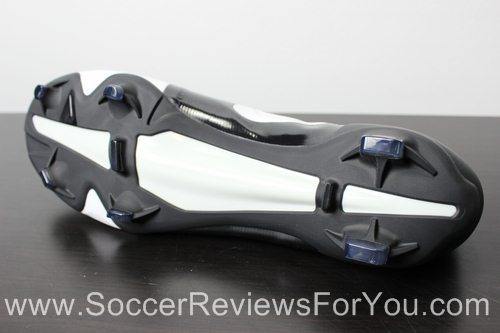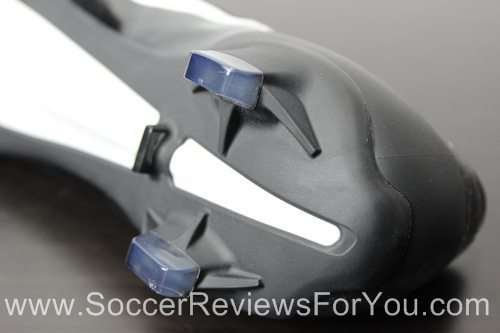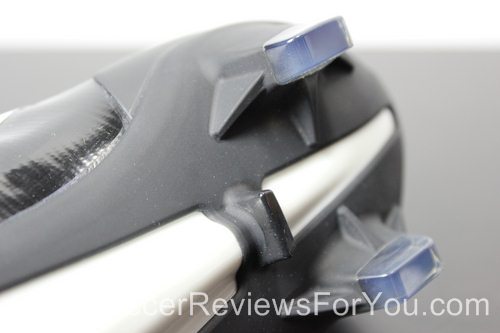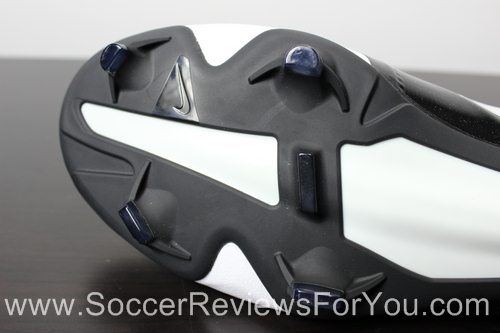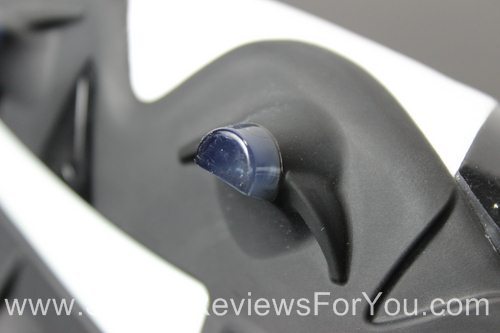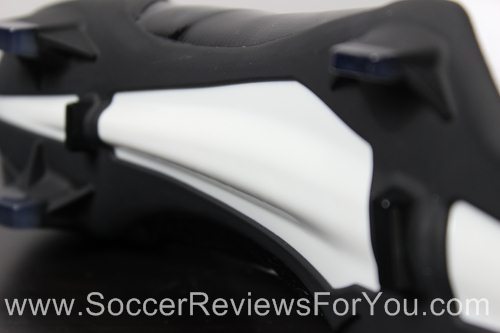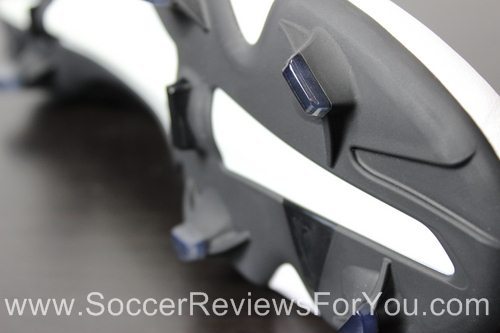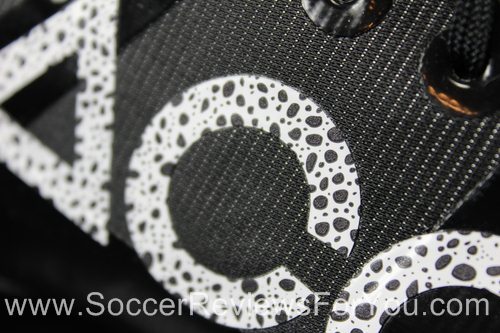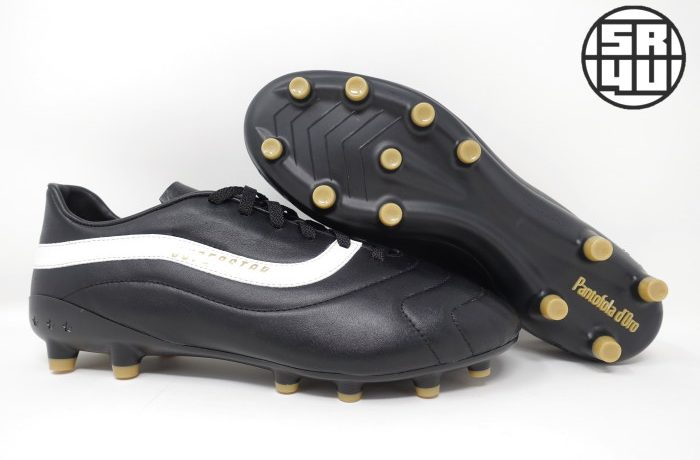Nike GS Concept 2 ACC Firm Ground Review
The Nike GS (Green Speed) Concept 2 is an incredibly innovative boot, one that created a huge buzz among soccer equipment enthusiast all over the world. Running with the idea to create a lightweight, performance product using the most environmentally friendly materials possible, the GS is one of the most unique boots that we’ve seen in quite some time. With the original GS release being limited to only 2012 pairs Worldwide, the release of the GS 2 has given plenty a chance at wearing this awesome concept boot, with the second release being produced in much larger quantities, and at a lower retail price. The GS is a demonstration of what Nike is capable of, and I think its safe to say that everyone is impressed.
Comfort/Fit
Unlike most high-end boots currently on the market, the GS isn’t exactly match ready from right out of the box. The first time that I put them on my feet, I was surprised by the stiffness of the entire boot. The soleplate, the upper and especially the heel of the shoe, feels very stiff, requiring several hours of break-in time until I truly felt comfortable. The overall fit and comfort level of the boot reminded me very much of the Nike Mercurial Superfly III, which is easily the stiffest soccer shoe ever made. I found myself wearing the GS about 30 minutes to an hour at a time for the first five or six training sessions until I felt like I could safely wear the boots for an entire match, or an extended period of time, without any kind of discomfort. During the break-in process, if you don’t take these boots off once you start feeling any kind of discomfort, you will no doubt get blisters. I was careful during the break-in process, so I managed to break-in the GS without any serious damage to my feet.
The main reason why I wouldn’t call the GS game-ready from right out of the box is mainly due to the material used as a heel liner. Made from that infamous perforated foam material, making its first return on a Nike boot since it was last used in the Nike Mercurial Vapor IV, this material replaces the heel liner, and is really stiff from brand new. Give it some time to break-in, and the material will soften up, allowing your heel to almost sink into the liner, which makes for some fantastic heel lock down in the boot. The rest of the boot is just stiff in general due to the physical materials that Nike used. The woven recycled polyester mid-foot section of the boot is much stiffer than you would expect it to be, but again, after a couple hours of wear, it becomes much more flexible. The Kanga-Lite forefoot section of the boot is also pretty stiff, but that’s mostly due to how thin the material actually is. The stiffness from the soleplate can be blamed on the Spine that runs through the center of the boot, but again, once you put up a couple of hours in, it becomes much more flexible.
Once the shoe is thoroughly worn-in, the boot is actually pretty comfortable for a lightweight soccer shoe. Again, I would compare it to the Superfly III, where the shoe fits very snug through the mid-foot. The tight fit in the mid-foot really locks your foot in the boot, giving the shoe a very responsive feel, while also limiting the boot to regular to narrow footed players. If you have wide feet, the GS is not the boot for you. The heel, even after break-in, still feels very stiff, much stiffer than your average soccer shoe, which bothered me a little bit at first, but eventually I did get used to it. The fit in the forefoot and toe box of the boot is a little wider than I had originally anticipated. I felt like the toe box should have been maybe just a little bit smaller, to make for a tighter fit overall. The toe box is more along the lines of what you got from previous models of the Nike Mercurial series, as opposed to the much tighter fit of the current Vapor VIII.
One major standout feature that I personally was impressed with was the insole. The insole is made from a single layer of foam, with no liner at all. It is thicker than you might expect, but feels absolutely weightless, which is very impressive. It definitely adds to the overall comfort level of the boot and the idea of not having a liner is awesome.
As far as sizing is concerned, the GS was only produced in four sizes: 8, 9, 10 and 11US, with no half sizes. For that reason, many were forced to either go half a size up or down if you were in between sizes. Luckily, I wear a size 9US, which is the size that I wore for review. The GS definitely does fit true to size, as my usual size 9US fit absolutely perfect in the length, so if you are looking to order a pair for yourself, I would strongly recommend going for your normal size. If you wear a half size, it is just matter of deciding if you would like the boots to fit either bigger or smaller, it your call to make. Its also worth mentioning that the Kanga-Lite forefoot area on the GS will have a little bit of stretch to it.
Obviously the Nike GS shares a similar silhouette to that of the Nike Mercurial series, and it is fair to say that they are similar boots in terms of feel. With that being said, the Vapor VIII is definitely the model that I would pick over the GS, but that’s not to say that the GS is not a good boot.
Weight
With a listed weight of 5.6oz, the Nike GS is the lightest boot that Nike has ever made! In hand and on feet, the shoe feels extremely lightweight, almost like its not there. 5.6oz is the same mark that Adidas hit with the original release of the adizero in 2010, so while the Nike GS is ultra-lightweight, it isn’t anything that we haven’t seen before. With that being said, it is pretty impressive that Nike was able to produce a shoe this light using only recycled materials. It doesn’t get much lighter than the GS.
Traction
The Nike GS uses a stud pattern that seems to have been heavily influenced by that of the Nike Mercurial vapor VIII, introducing one the most minimalist firm ground stud patterns that we’ve ever seen. While the idea of having only six studs as a firm ground stud pattern is definitely unusual, it cannot be denied that it works extremely well. With that being said, there is one major issue with this type of stud pattern that both the GS and the Vapor VIII suffer from, and its not the stud pattern itself, but rather the type of ground that it needs to be used on. This is a stud pattern that was designed for use on professional, premium natural grass, meaning that the ground has some softness to it. While some people do play on nice, slightly softer playing surfaces, many play on very hard ground, which is fine for most firm ground stud patterns, but is honestly not the best for a stud pattern like that of the GS. So, if you’re looking at a shoe with a stud pattern like this, just realize that it isn’t going to perform as well if you’re playing on harder playing surfaces, especially artificial grass.
The stud pattern itself consists of four main studs in the forefoot, with one support stud in the middle, and two bladed heel studs, with one braking stud in front. The two studs on the instep of the forefoot are shaped like half-circles, with the round edge facing the outside and the straight edge on the inside. This concept runs with the idea of having the grip of a bladed stud at push-off, with the quick release of a conical stud. The two studs on the outside of the forefoot are pretty much identical in shape in comparison to the Vapor VIII and are positioned at the exact same angles. As a whole, I would say that the stud pattern feels almost exactly the same as that of the Vapor VIII, which shouldn’t be much of a surprise. Given that the ground is a little softer, the studs dig in very aggressively, giving you some fantastic traction when pushing off and making quick changes of direction. Stability is not an issue at all, if that is something that you were worried about.
One very interesting aspect of this stud pattern is the braking stud, positioned about an inch in front of the back heel studs. While I can’t really say that it is a noticeable addition to this particular stud pattern, I absolutely love the idea. Small things like this are what make the GS such a special shoe, and I hope that the braking stud will find its way on to future releases from Nike.
As a whole, the stud pattern performs extremely well. You get plenty of grip when pushing off and because the studs are positioned in only the push points on your foot, you get a really good sense of how much grip that you actually have, allowing you to cut at high speed without fear of slipping.
Touch
I didn’t know what to expect from the Nike GS in terms of touch. The materials used on the upper are firsts as far as Nike products are concerned, using a new version of Kanga-Lite and woven polyester to make up the upper of the shoe. To start off with the Kanga-Lite on the boot, taking up the forefoot section of the upper, its definitely different. Unlike all the other version of Kanga-Lite that we’ve seen from Nike, the GS features a Kanga-Lite minus any kind of padding. The concept behind Kanga-Lite in the first place was to create a synthetic material to mimic the touch and feel of natural Kangaroo Leather, while maintaining the benefits of a synthetic. Like I said, the Kanga-Lite on the GS is thin, with no padding to it, making for what I would describe as a more rugged version of the Teijin synthetic material used on the Vapor VIII. Once you give the shoe some time to break-in, the Kanga-Lite does soften up nicely, but was not personally my cup of tea. I feel like Nike should have stuck with either the standard, slightly padded version of Kanga-Lite or went for the ultra-thin Teijin synthetic used on the Vapor VIII. Instead, the GS is kind of in between in terms of feel, which is OK, but I think I would have preferred if the upper had gone with one of current “standard” synthetics from Nike.
As far as the woven polyester section of the boot is concerned, it definitely offers a unique feel on the ball. From right out of the box, the polyester section of the boot feels very stiff, and honestly a little bit awkward. Again, this shoe needs a couple of hours until it starts to feel right. Once the upper has softened up a little bit, the touch improves dramatically. The woven polyester takes up nearly the entire tongue as well as the entire mid-foot of the boot. The touch is that of a thin material, but it isn’t all that soft. There is absolutely no cushion to it either, but because it is so tightly woven, it gives a very solid impact. One major aspect of the upper to take note of is the rubberized coating that makes up what is essentially an external support frame for the boot. This rubberized coating adds barely any thickness to the upper itself, as it is pretty much heat molded to the polyester, but it does take up the lower half of both the inside and outside of the mid-foot. This gives the boot a very sticky touch on the ball in the mid-foot section of the boot, which took a little bit of getting used to, but after an hour or so, it wasn’t an issue.
The GS 2 was different from the original in that it introduced Nike’s brand new ACC, All Conditions Control, technology. With the very large “ACC” Safari Print graphic covering the lateral panel of the boot, Nike wanted not only to showcase the Green Speed Concept, but also their ACC technology. What ACC is designed to do, is provide superior friction, or control, on the ball in wet playing conditions. Think of it as a “wet weather” control element, allowing for the best possible touch on the ball in all types of playing conditions. Basically, it doesn’t allow water to sit on the outside layer of the upper, so you won’t have as slick of a touch on the ball when playing in the wet. ACC itself, is not actually a coating either, but is actually something that is permeated to the upper itself. The process by Nike is pretty secretive, but we do know that ACC is actually in the makeup of the upper, rather than being a coating that could wear away.
ACC is a cool addition to an already cool boot, but for me it doesn’t make or break the touch that this shoe provides. When playing in the wet, it does have its minor benefits, and as I’ve said in the past, ACC is something that I would choose to have on any boot if it was an option. All in all, the touch that the GS provides is good, but it’s nothing over the top.
Shooting
Striking the ball in the GS feels great. The thin upper allows for a very clean contact between your foot and the ball, with minimal interference. If you like the feel of striking the ball barefoot, than the GS is going to right up your alley. The soleplate is also a great in that it provides plenty of stiffness through the mid-foot, giving the shoe a very solid feel while still being very lightweight. Nothing really surprised me when it came to striking the ball in the GS, and overall it feels pretty good.
Protection
Like any thin soccer shoe, the amount of protection that the GS will provide is pretty minimal. As far as protective elements of the boot are concerned, the only thing that you’re getting is a hard plastic external heel. The rest of the boot is on the thinner side, and should you get stepped on, you definitely will feel it. If you’re willing to sacrifice protection for that ultra-lightweight, barefoot feel than you will be very happy with the GS.
Durability
I’m not so sure that durability is going to be the strong point of the Nike GS. Like I said earlier, the concept behind the boot was to create a performance product using only the most “green” materials, which is why the word “Concept” is in the title. That’s not to say that the materials used are not high quality and the boot isn’t well made, but I would say that the materials used and the way that the boot is put together doesn’t make for the most durable boot ever. With that being said, the shoe is wearable, and I think that most people that bought a pair of Nike GS’s had always intended on wearing them. Just realize that this boot did so many firsts, making it hard to judge how durable it will actually be. I personally had no issues with my pair, but I wouldn’t be surprised if others have.
It is also worth noting that the Nike GS was designed for use on firm, natural grass playing surfaces. Using this shoe, or any firm ground soccer shoe, on artificial grass/turf will have a major impact on the overall durability of the boot.
The Verdict
There is no denying that the Nike GS Concept is one of the coolest, most unique soccer shoes ever made. Nobody has really ever designed a soccer shoe with the restrictions on materials and the overall manufacturing process in an attempt to make the most “green” shoe possible. The GS is truly revolutionary, introducing so many new technologies and materials on a single pair of soccer shoes. Between the materials, manufacturing process and design elements of the boot, its hard not to be impressed by the Nike GS. As an actual performance product, its good, but it definitely isn’t the best boot ever as many believed it to be. The Nike GS Concept was Nike’s way of flexing their muscles, showing everybody what they are capable of, and for that I applaud them. If you got your hands on a pair of Nike GS, there is no doubt that you will enjoy them. Look out for some of the technologies seen on the GS to be used on future releases from Nike.
| Comfort/Fit | 8 out of 10 |
| Weight | 10 out of 10 |
| Traction | 10 out of 10 |
| Touch | 8 out of 10 |
| Shooting | 9 out of 10 |
| Protection | 7 out of 10 |
| Durability | 7 out of 10 |
| FINAL SCORE | 59 out of 70 or 84% |


